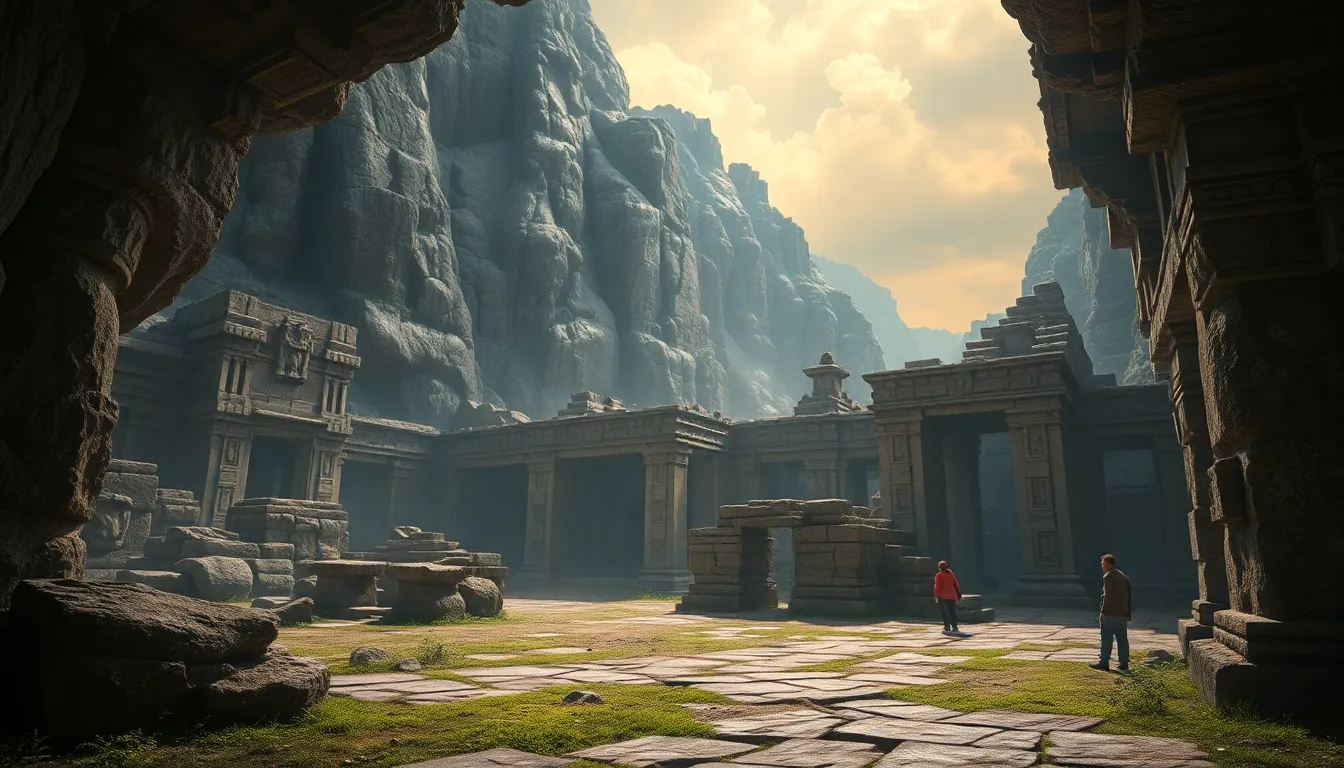Enchanting Ruins: The Sacred Places of Lost Civilizations
I. Introduction
The term “Enchanting Ruins” evokes images of ancient places steeped in mystery, where nature intertwines with human history. These remnants of lost civilizations are not merely structures; they represent the cultural and spiritual essence of the people who once inhabited them.
Sacred places hold great importance in ancient cultures, serving as sites for worship, rituals, and community gatherings. They reflect the values, beliefs, and aspirations of those who built them. This article explores the enchanting ruins of various lost civilizations, delving into their sacred significance and the legacies they left behind.
II. The Concept of Sacred Spaces in Ancient Cultures
Sacred spaces have always been vital to human societies, providing a tangible connection to the divine or the supernatural. Here are some key aspects:
- Spiritual Significance: Sacred sites often served as places of worship, meditation, and connection to the cosmos.
- Common Elements of Sacred Architecture: Typical features include altars, temples, and monuments designed with specific alignments to celestial events.
- Rituals and Practices: Many ancient cultures conducted rituals at these sites, including sacrifices, festivals, and pilgrimages.
III. The Mystique of the Maya: Tikal and Chichen Itza
The Maya civilization, known for its advanced knowledge in mathematics, astronomy, and architecture, flourished in Mesoamerica. Tikal and Chichen Itza are among its most famous sites.
The architectural marvels of the Maya, such as the towering pyramids and intricate carvings, hold deep sacred meanings. For instance, the Temple of the Inscriptions at Palenque is a testament to Maya beliefs about the afterlife and the divine right of kings.
Today, preservation efforts are crucial in maintaining these sites, as they face threats from tourism and climate change. Responsible tourism is essential to ensure that these sacred places continue to inspire future generations.
IV. The Lost Cities of the Andes: Machu Picchu and Tiwanaku
The Inca and Tiwanaku civilizations thrived in the Andes, creating remarkable sacred sites that reflect their spiritual beliefs and societal structures.
Machu Picchu, often referred to as the “Lost City of the Incas,” is an architectural wonder that served as a royal estate and religious site. Similarly, Tiwanaku, with its impressive stone constructions and ceremonial complexes, was central to the Andean spiritual landscape.
The cultural legacy of these civilizations endures, influencing modern-day spirituality and tourism, with efforts ongoing to protect these vital sites for future generations.
V. The Ancient Greeks: Delphi and Olympia
In ancient Greece, sacred sites played a crucial role in society, particularly through oracles and religious practices. Delphi, home to the Oracle of Delphi, was revered as the center of the world, where individuals sought divine guidance.
Architectural highlights like the Temple of Apollo at Delphi and the ruins of Olympia, site of the ancient Olympic Games, reflect the Greeks’ architectural prowess and spiritual beliefs.
These sites continue to influence contemporary spirituality and tourism, drawing visitors eager to connect with the past.
VI. The Spiritual Heart of Egypt: The Pyramids and Karnak Temple
Ancient Egyptian beliefs centered around the afterlife, making pyramids and temples significant sacred spaces. The Pyramids of Giza, monumental tombs for pharaohs, symbolize the Egyptians’ profound beliefs in immortality.
The Karnak Temple, dedicated to the god Amun, features stunning architecture and hieroglyphs that tell stories of devotion and worship.
Current archaeological efforts aim to uncover more about these sacred spaces, revealing insights into ancient Egyptian spirituality and practices.
VII. The Forgotten Temples of Angkor Wat
The Khmer Empire, flourishing from the 9th to the 15th century, left behind the magnificent Angkor Wat complex, a testament to the empire’s architectural innovations and spiritual symbolism.
Angkor Wat, originally dedicated to the Hindu god Vishnu, later transitioned into a Buddhist temple, reflecting the region’s evolving spiritual landscape.
Restoration efforts are ongoing, as the impact of modern tourism poses challenges to preserving this UNESCO World Heritage site.
VIII. Indigenous Sacred Sites: The Importance of Oral Traditions
Indigenous cultures worldwide possess sacred sites that are integral to their spirituality and identity. These places often connect communities to their ancestors and the natural world.
Oral traditions play a vital role in preserving the history and significance of these sacred places, passing down knowledge and cultural values through generations.
However, many indigenous sacred sites face challenges, including environmental degradation and encroachment from modern development, highlighting the need for protection and respect.
IX. The Role of Nature in Sacred Ruins
The connection between sacred places and the natural environment is profound. Many ancient cultures viewed nature as sacred, integrating it into their spiritual practices.
Nature influences the preservation of ruins, as ecosystems can protect or deteriorate archaeological sites. The landscape often plays a significant role in the spiritual practices of ancient peoples, serving as a backdrop for rituals and ceremonies.
X. Conclusion
The enchanting ruins of lost civilizations offer a glimpse into humanity’s spiritual journey. These sacred places remind us of the beliefs and values that shaped ancient cultures, providing lessons for our modern world.
Preserving these sacred ruins is crucial for future generations, ensuring that the stories and teachings of our ancestors endure. It is essential for travelers and communities to engage in responsible tourism, honoring and respecting these cultural treasures.



